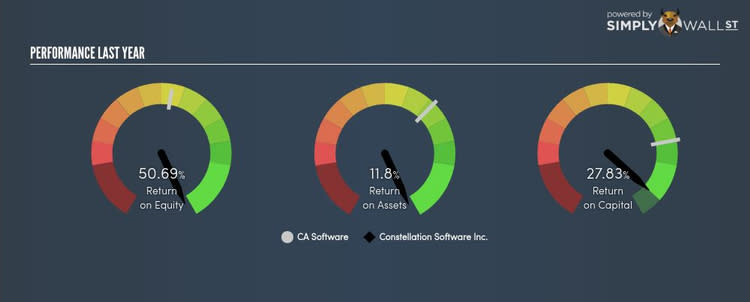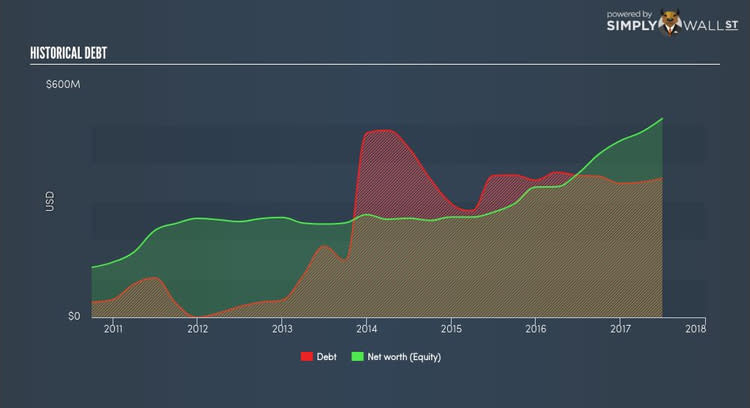With An ROE Of 50.69%, Has Constellation Software Inc’s (TSX:CSU) Management Done A Good Job?

With an ROE of 50.69%, Constellation Software Inc (TSX:CSU) outpaced its own industry which delivered a less exciting 17.49% over the past year. On the surface, this looks fantastic since we know that CSU has made large profits from little equity capital; however, ROE doesn’t tell us if management have borrowed heavily to make this happen. Today, we’ll take a closer look at some factors like financial leverage to see how sustainable CSU’s ROE is. Check out our latest analysis for Constellation Software
Breaking down ROE — the mother of all ratios
Return on Equity (ROE) is a measure of CSU’s profit relative to its shareholders’ equity. An ROE of 50.69% implies $0.51 returned on every $1 invested. In most cases, a higher ROE is preferred; however, there are many other factors we must consider prior to making any investment decisions.
Return on Equity = Net Profit ÷ Shareholders Equity
ROE is assessed against cost of equity, which is measured using the Capital Asset Pricing Model (CAPM) – but let’s not dive into the details of that today. For now, let’s just look at the cost of equity number for CSU, which is 8.49%. Since CSU’s return covers its cost in excess of 42.19%, its use of equity capital is efficient and likely to be sustainable. Simply put, CSU pays less for its capital than what it generates in return. ROE can be split up into three useful ratios: net profit margin, asset turnover, and financial leverage. This is called the Dupont Formula:
Dupont Formula
ROE = profit margin × asset turnover × financial leverage
ROE = (annual net profit ÷ sales) × (sales ÷ assets) × (assets ÷ shareholders’ equity)
ROE = annual net profit ÷ shareholders’ equity
Basically, profit margin measures how much of revenue trickles down into earnings which illustrates how efficient CSU is with its cost management. Asset turnover reveals how much revenue can be generated from CSU’s asset base. Finally, financial leverage will be our main focus today. It shows how much of assets are funded by equity and can show how sustainable CSU’s capital structure is. Since financial leverage can artificially inflate ROE, we need to look at how much debt CSU currently has. At 69.92%, CSU’s debt-to-equity ratio appears sensible and indicates the above-average ROE is generated from its capacity to increase profit without a large debt burden.
What this means for you:
Are you a shareholder? CSU’s above-industry ROE is encouraging, and is also in excess of its cost of equity. Since ROE is not inflated by excessive debt, it might be a good time to add more of CSU to your portfolio if your personal research is confirming what the ROE is telling you.
Are you a potential investor? If you are considering investing in CSU, basing your decision on ROE alone is certainly not sufficient. I recommend you do additional fundamental analysis by looking through our most recent infographic report on Constellation Software to help you make a more informed investment decision. If you are not interested in CSU anymore, you can use our free platform to see our list of stocks with Return on Equity over 20%.
To help readers see pass the short term volatility of the financial market, we aim to bring you a long-term focused research analysis purely driven by fundamental data. Note that our analysis does not factor in the latest price sensitive company announcements.
The author is an independent contributor and at the time of publication had no position in the stocks mentioned.


